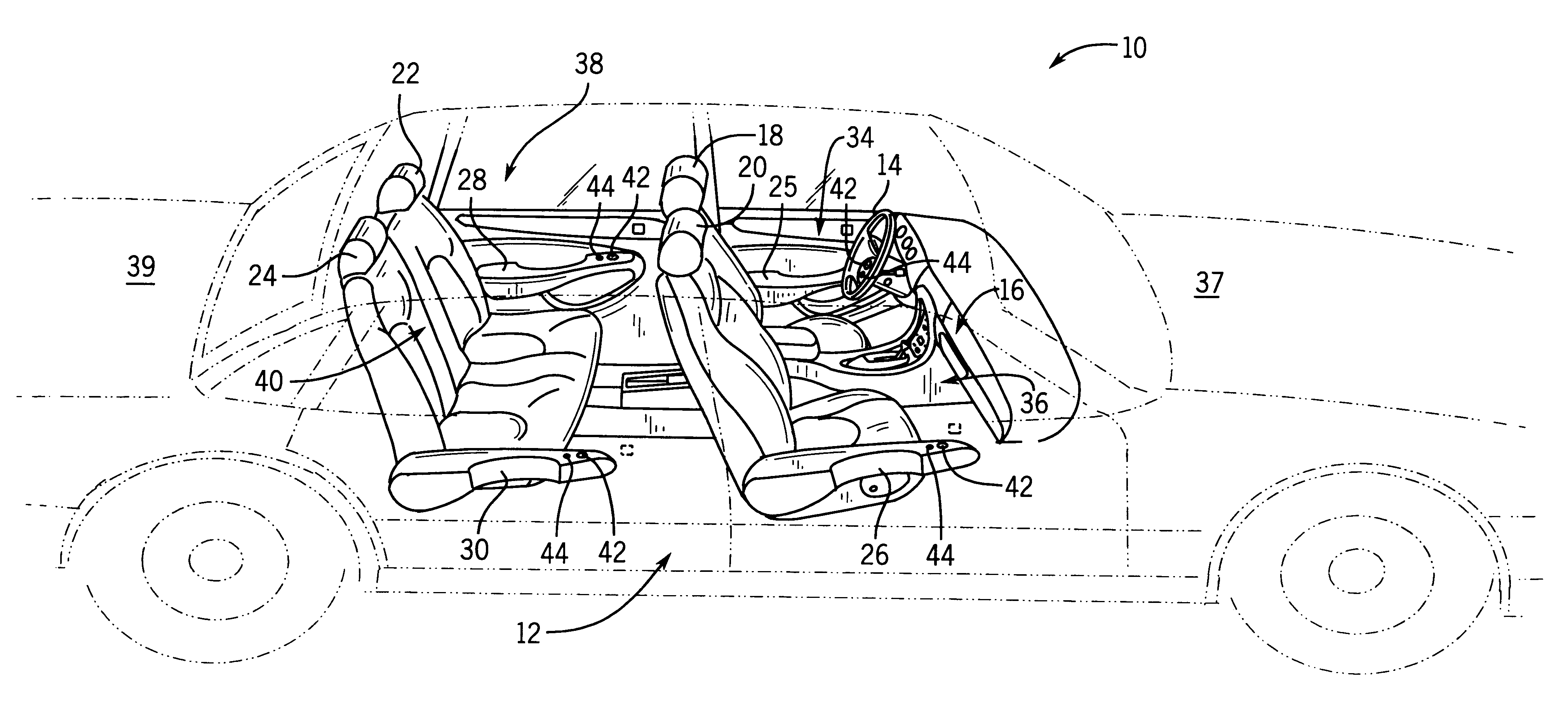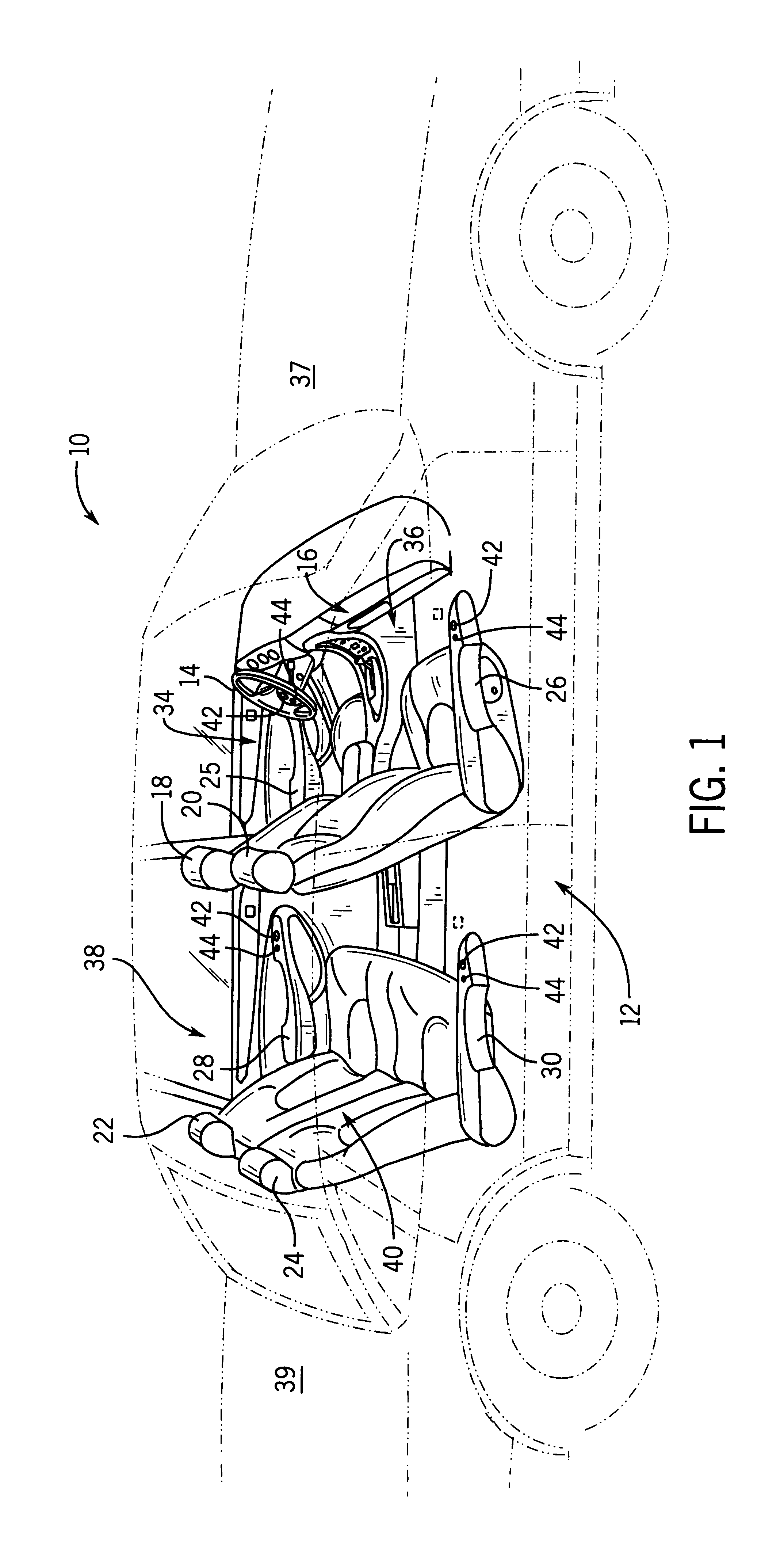Method and apparatus for controlling multiple speech engines in an in-vehicle speech recognition system
a speech recognition system and speech engine technology, applied in speech recognition, speech analysis, instruments, etc., can solve the problems of not being able to accommodate for the variation in acoustic characteristics at each seat, and not being able to accurately recognize speech
- Summary
- Abstract
- Description
- Claims
- Application Information
AI Technical Summary
Benefits of technology
Problems solved by technology
Method used
Image
Examples
Embodiment Construction
Referring to FIGS. 1 and 2, an automobile 10 includes a passenger cabin 12 having a steering wheel 14, an instrument panel / dashboard 16, driver seat 18, front 20 and rear passenger seats 22, 24 and driver 25, front passenger 26 and rear passenger 28, 30 arm rests. The driver 18 and front 20 and rear passenger seats 22, 24 define a driver speaking location 34 and a three passenger speaking locations 36, 38, 40, respectively. Locations other than the seats, such as under the hood 37 or in the trunk 39, may also define speaking locations as well. A microphone 42 and push-to-talk (PTT) control 44 are mounted proximate each speaking location. The microphones 42 and PTT controls 44 can be positioned apart or in close proximity to each other and mounted to any suitable part of the automobile 10 provided the PTT controls 44 are easily operated by hand and the microphones can pick up speech signals from a speaker seated in one of the speaking locations. Preferably, a microphone 42 and a push...
PUM
 Login to View More
Login to View More Abstract
Description
Claims
Application Information
 Login to View More
Login to View More - R&D
- Intellectual Property
- Life Sciences
- Materials
- Tech Scout
- Unparalleled Data Quality
- Higher Quality Content
- 60% Fewer Hallucinations
Browse by: Latest US Patents, China's latest patents, Technical Efficacy Thesaurus, Application Domain, Technology Topic, Popular Technical Reports.
© 2025 PatSnap. All rights reserved.Legal|Privacy policy|Modern Slavery Act Transparency Statement|Sitemap|About US| Contact US: help@patsnap.com



